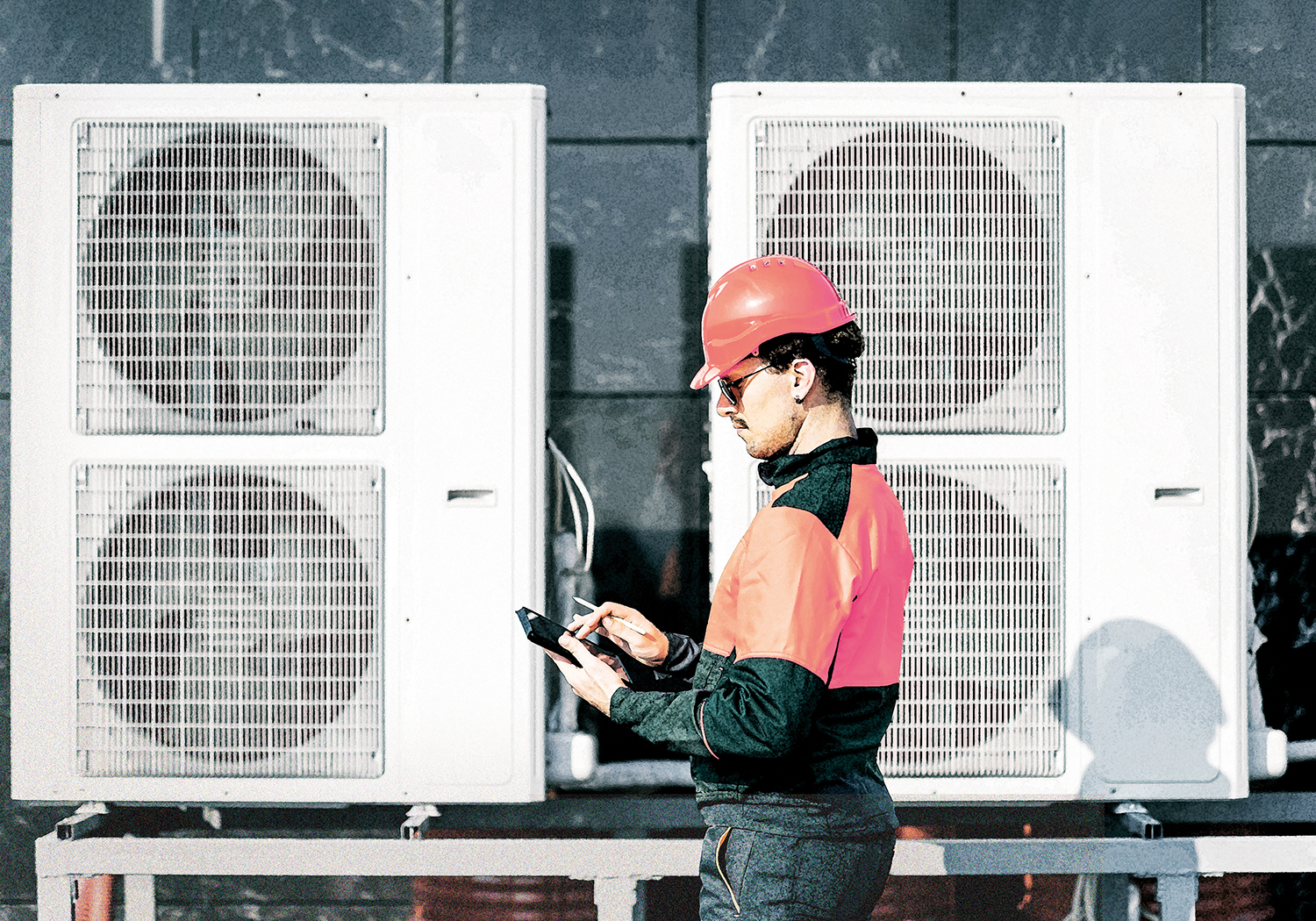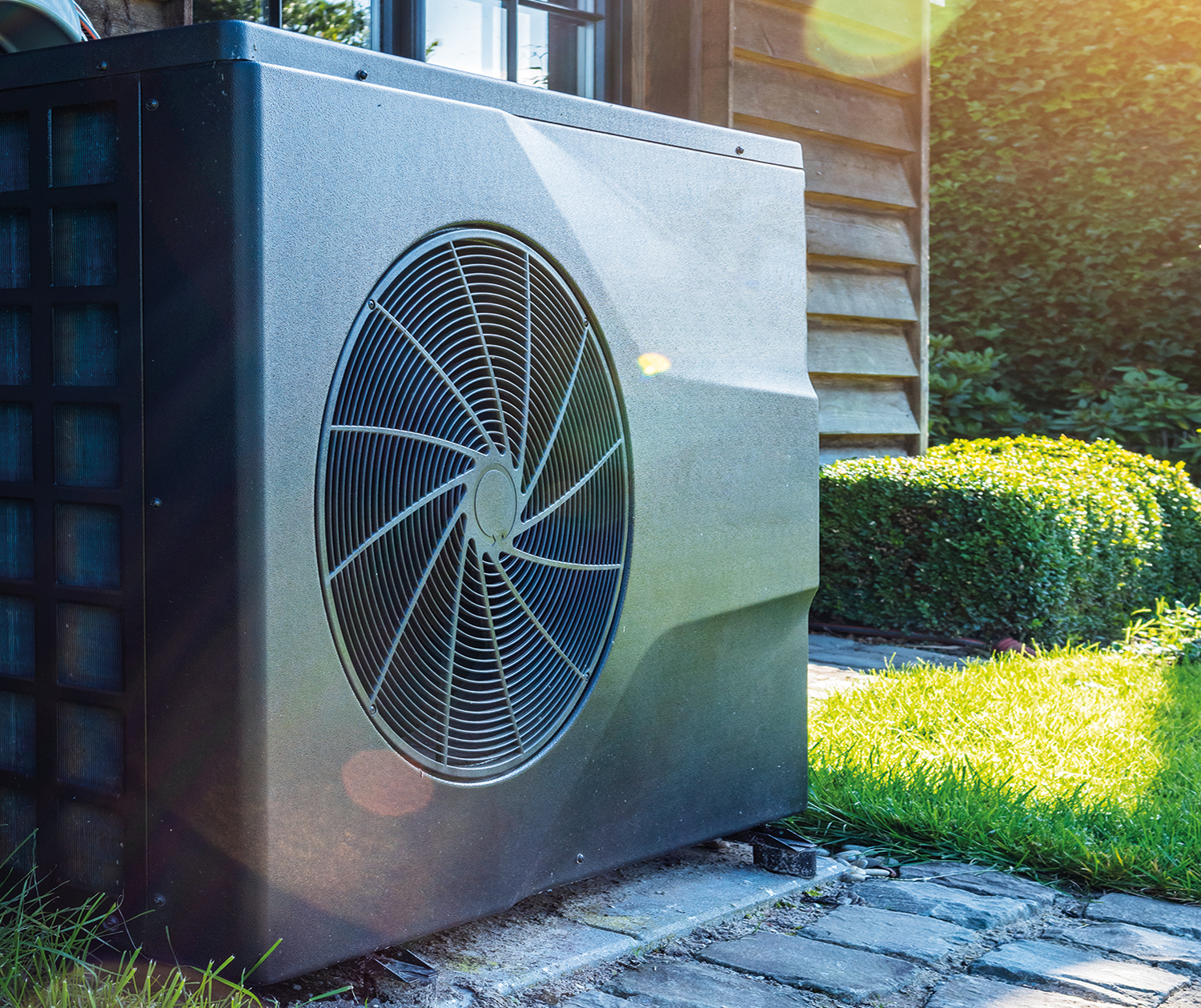
The UK government sees heat pumps as a key low-carbon energy technology, but they have come in for plenty of criticism. Luke Osborne explains how they work.
As the UK continues to grapple with the effects of climate change and rising energy bills, heat pumps have emerged as one of the best ways to move away from high-emission fossil fuels and help reduce costs in the long run.
When it comes to decarbonising heat in our homes and offices, heat pumps provide a great solution. However, there are important points for installers, designers and facilities managers to bear in mind.
Building fabric
The fabric of a building should be the first call when considering how to reduce energy use. Energy use and running costs come down to how much thermal output the building requires. Ensuring that thermal losses are minimal will reduce both.
A full retrofit programme will enable correct planning and coordination of works. For further information, see PAS 2035: Retrofitting Dwellings for Improved Energy Efficiency – Specification and Guidance.
Existing systems
Heat pumps operate at a lower temperature (under 55C) than conventional gas-fired wet heating systems. In homes with a condensing boiler system, the cost of this change should be relatively low. Older systems which used hot water storage tanks and small emitters (operating at higher temperatures) may need both pipework and emitters changed to operate at the lower flow temperatures of heat pump installations.
Size
“With around a third of the UK population now considering heat pumps, more installers are looking to provide this service.”
It is essential that a heat pump is the correct size for its intended application. Complete room-by-room heat-loss calculations will ensure correct sizing of emitters for each room. Designers and installers should calculate the total thermal demand and domestic hot water (DHW) to specify the size of the heat pump required. This saves the hassle of resolving inefficiencies caused by a heat pump that is too small, or even too large.
Efficient operation
To enable the efficient operation of a heat pump and to prevent excessive power cycling, designers should include a suitably sized thermal buffer within the system. This will ensure that the heat pump has sufficient heat to draw upon, without running constantly.
For the same reason, installers should put in a hot water cylinder for the DHW. These allow the heat pump to run ‘off-peak’ and also become active during demand side response (DSR), reducing the electrical load from the grid at times of peak demand. This benefits the end user, who can maximise time-of-use (ToU) tariffs, reducing running costs further.
Installation skills
We have seen some industry reticence in upskilling for heat pump installations, though the early adopters are taking a lead. As confidence increases, so will the installer base. With around a third of the UK population now considering heat pumps, more installers are looking to provide this service.
The early adopters are now creating career development pathways for both new entrants and those looking to upskill, with a growing number of courses available. Training providers may need assistance in ensuring there is sufficient access to courses across the UK.
Conventional heating is predominantly installed by heating engineers. However, as heat pumps are true M&E installations, electrical contractors are upskilling or partnering with heating engineers to offer a more complete service to their customers.
Future developments
Heat pumps are a proven technology that work well when sized and installed correctly in the right environment. Continental Europe has used heat pumps for decades. And the technology continues to evolve.
CO2 heat pumps have been available commercially for several years and some installers are trialling them in the domestic sector. A CO2 heat pump, which uses carbon dioxide as a refrigerant, can enable delivery of higher temperatures while also having a global warming potential (GWP) – the heat absorbed by any greenhouse gas in the atmosphere – of just 1. This compares very favourably to refrigerant gases used in other systems – for example, R410A has a GWP of some 2,088.
The cost to customers

With electricity (in normal times) being around three times the cost of gas per kWh, many consumers have asked about the economic viability of switching to heat pumps.
A well-designed and correctly sized heat pump should have an average seasonal coefficient of performance (ScoP) of between 3-4. This translates as 3-4kW of heat output for each kW used to run the heat pump. That means the running costs of a heat pump will be the same or less than a gas-fired system.
Through the Boiler Upgrade Scheme (BUS), homeowners in England and Wales can claim £5,000 or £6,000 towards the installation of an air source heat pump (ASHP) or ground source heat pump (GSHP) respectively.
For an ASHP installation this is a real help. A gas boiler replacement typically costs around £3,000, so this gives a homeowner a fund of £8,000 (as the homeowner would have been paying out £3,000 in any case). With ASHP installation costing between £7,000-£13,000, according to the Energy Saving Trust, this fund will cover all or a significant amount of the cost.
For most consumers, heat pumps are still an ‘unknown’ and there is much work required on messaging and educating the public. Installation horror stories tend to drown out the tens of thousands of successful installations around the country.
Luke Osborne is energy and emerging technologies solutions advisor at the Electrical Contractors Association.
Comments
Comments are closed.












Sorry Jack, but where did the data come from that one 3rd of the population is considering heat pumps??
The earth is 4 billion years old and in that time has had dozens of ice ages, with the last one melting 12 thousand years ago.
No one talks about natural carbon emissions that come from volcanos or the fact man has not caused ANY of ice ages in the past.
Those that are pushing the green agenda are the ones that will profitize from the policies!! And I suspect the same people are reporting that 1 3rd of the population is considering heat pumps. Which is simply a made up statistic to push the agenda.
Amazing how the figures from source to source very so much. Clearly on this, the people trying to propagate their use need to come up with a believable set of figures before anyone is going to take them seriously.
Working for the Electrical Contractors Association the views of Luke Osborne, with all due respect, can hardly be regarded as impartial. However to the stated estimated cost of installing an ASHP of £7K-£13K must be added the not inconsiderable cost of insulating the several million houses in the UK that have 215mm brick external walls. Whilst not technically impossible, in most cases it would be impracticable to do this and raises a likely estimated total installation cost to nearer £30K. This is no ‘myth’ and would be a major deterrent to heat pump installation although not mentioned by Mr. Osborne.
My domestic gas and electricity price comparison in p/kwh doesn’t nearly match Luke’s example, mine being a factor of about 2.5:20(Gas: Elect) at normal/daytime rates; the standing charge being almost the same, so the economics don’t remotely work for me, even if it turned out I didn’t need to replace all the in/under floor pipework and the ’emitters’/radiators – and you ignore the loss of efficiency at lower ambient temperatures. With off-peak electricity rates at about a quarter of the daytime rate, I shall continue to reheat my DHW tank overnight with an immersion heater and programme the washing machine etc accordingly.
The imperative to change might be altruistically and economically different when the source electricity we are encouraged to use is predominantly and consistently produced from non-carbon and renewable sources or when higher output temperatures can be achieved, and when the generating industry can realistically cope with this and all the car-charging demand.
The aberration in the global temperatures charts since the 1950s continues with average temperatures and extreme weather patterns on the rise globally.
The science consensus suggests we are impacting, whilst fringe denialists usually backed by massive financial interests argue for the status quo.
If nothing else, we need to recognise that the fuel we are burning is finite and the supply is largely under the control of despots.